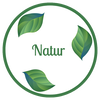|
A look behind the scenes into what goes into making the Multi-Purpose Powders available in the shop on this site. My aim with the Multi-Purpose Powders is to create every shade imaginable, for maximum flexibility to create the look you want. The artists among you will know that theoretically, all you need to make every colour is the primary colours of red, blue and yellow, plus white and black to make tones, tints and shades. The reality can be a little more complex, as I explain below, but to make the powders, I start with the pigments shown here. You can see that the Iron Oxide comes in four different shades: red, black, brown and yellow. This ticks off two of your primary colours right away. However, you'll notice that all of these colours have an earthy, brownish undertone. When you think about it, this is not surprising, as they did come out of the earth. It does mean though that one colour that is very difficult to achieve with natural mineral pigments is a really bright scarlet. Traditionally, this was achieved with carmine, usually known as cochineal when it's used in food, a.k.a. crushed beetles. This ingredient is still used in many cosmetics, included ones that market themselves as 'natural', because it is indeed natural, just deeply unpleasant. Obviously I won't use this option in my products, and I want to avoid synthetic colours, as these have been linked with safety concerns, so I'm currently exploring botanical options for red pigments. I'll be writing another article later about the problems with botanical pigments, so stay tuned. Returning to our mineral pigments then, zinc oxide gives us a good, bright white and chromium oxide green is, funnily enough, green. To get blue, we use Ultramarine Blue, which is a gorgeous, vibrant blue. Although usually known as Ultramarine Blue, this same mineral is actually available in pink and lilac shades as well. Finally, for a pinky purple, we can use Manganese Violet. Although not shown in the photo above, titanium dioxide adds extra sparkle to powders where a glittery effect is required. Since mineral pigments are prone to clumping, and can look very flat when applied, they are usually bonded to mica in modern cosmetics, to create a shimmery powder that glides on easily and sparkles on the face. By combining different amounts of the pigments above, pre-bonded onto mica, pretty much any shade can be achieved. However, I wanted to give my customers the full range of options, so I am going to be introducing a range of matte powders as well, as these were requested by a number of people. These powders won't have the shimmer of the other colours, but will give the same excellent coverage. You can read more about where all of these powders come from in this article, or click here for more information on how I source my mica shades. To see the full range of colours currently available, click here.
0 Comments
Leave a Reply. |
KateThoughts, musings, and ruminations on skincare and related topics. Categories
All
Archives
March 2024
|





 RSS Feed
RSS Feed
